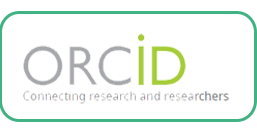ANALYSIS OF APPLIED LINGUISTICS IN STUDENTS’ SPEAKING AT MAN KOTA PALANGKA RAYA
Abstract
Keywords
Full Text:
PDFReferences
Alsayed, F. (2020). The Effects of Semantics in the Language Development of English as a Foreign Language (EFL) Learners. International Journal of Learning and Development, 9(4), 138. https://doi.org/10.5296/ijld.v9i4.15735
Aspers, P., & Corte, U. (2019). What is Qualitative in Qualitative Research. Qualitative Sociology, 42(2), 139–160. https://doi.org/10.1007/s11133-019-9413-7
Bender, A., & Beller, S. (2016). Probing the Cultural Constitution of Causal Cognition – A Research Program. Frontiers in Psychology, 7(February), 1–6. https://doi.org/10.3389/fpsyg.2016.00245
Cahyono, A. O. M., & Perdhani, W. C. (2022). Journal of English Education and Teaching (JEET). Journal of English Education and Teaching (JEET), 6(2), 59–77.
Dash, B. B. (2013). An analysis of ‘stress’ in English language: A study of the rules and approaches. Electronic International Interdisciplinary Research Journal, 2(1), 121–130.
Lester, J. N., Cho, Y., & Lochmiller, C. R. (2020). Learning to Do Qualitative Data Analysis: A Starting Point. Human Resource Development Review, 19(1), 94–106. https://doi.org/10.1177/1534484320903890
Liddicoat, A. J. (2010). Applied Linguistics in its disciplinary context. Australian Review of Applied Linguistics, 33(2). https://doi.org/10.2104/aral1014
Maltseva, K. (2022). Cognitive dimension of culture and social axioms: using methods of multidimensional analysis to research Ukrainian cultural beliefs about success and inequality. Journal of Cultural Cognitive Science, 6(3), 305–323. https://doi.org/10.1007/s41809-022-00096-x
Monich, I. (2023). ɗ p ɑ Interaction of phonation and tone in Nuer. 5, 1–40.
Rasman. (2018). To translanguage or not to translanguage? The multilingual practice in an indonesian EFL classroom. Indonesian Journal of Applied Linguistics, 7(3), 687–694. https://doi.org/10.17509/ijal.v7i3.9819
Wu, Y. (2013). Conversation analysis - a discourse approach to teaching oral english skills. International Education Studies, 6(5), 87–91. https://doi.org/10.5539/ies.v6n5p87
DOI: http://dx.doi.org/10.30829/vis.v19i2.3056
Refbacks
- There are currently no refbacks.
Copyright (c) 2023 VISION
















